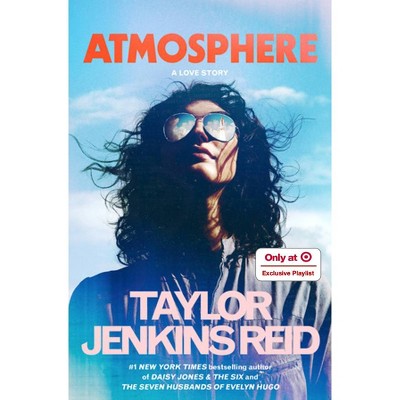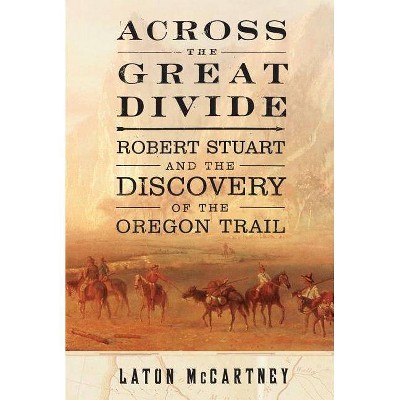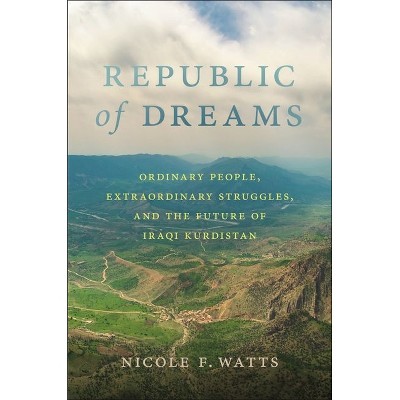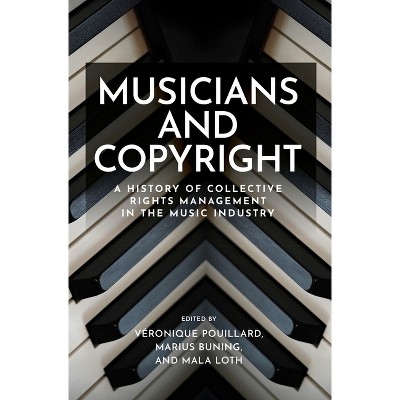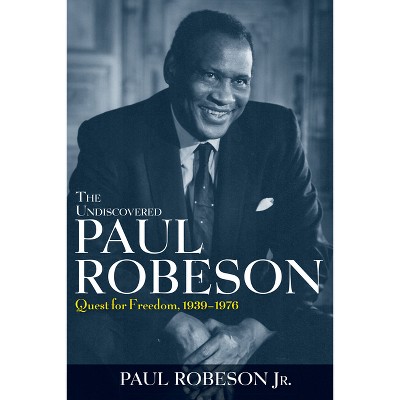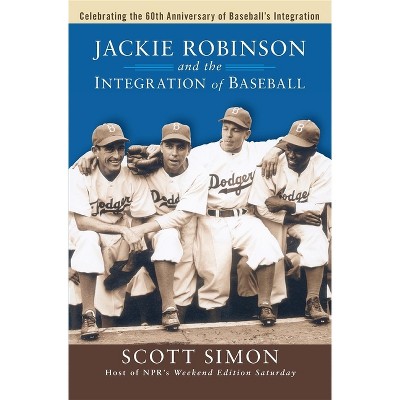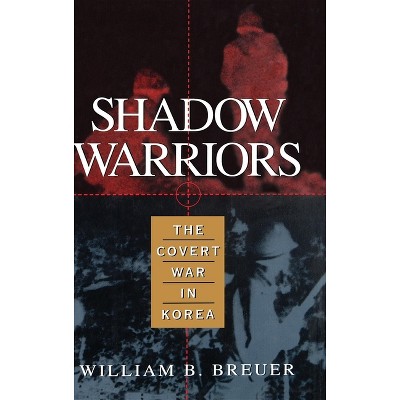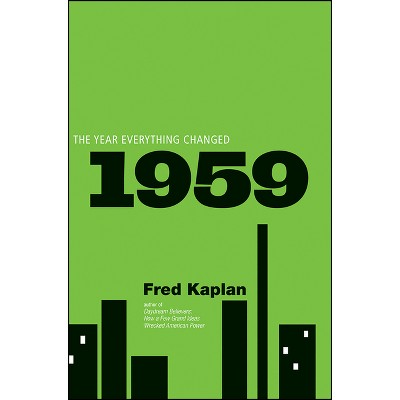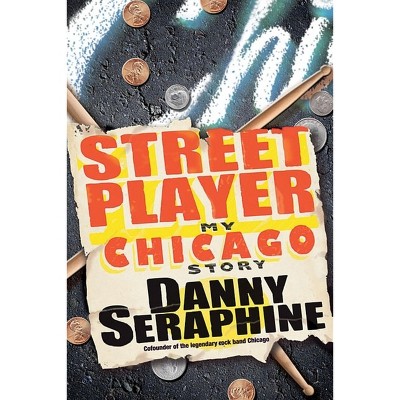Sponsored

The Undiscovered Paul Robeson - (Hardcover)
$23.67Save $16.28 (41% off)
In Stock
Eligible for registries and wish lists
Sponsored
About this item
Highlights
- The long-awaited, untold, inside story of the rise of the legendary actor, singer, scholar, and activist.
- Hurston/Wright LEGACY Award (Nonfiction) 2002 4th Winner
- About the Author: PAUL ROBESON, Jr., is a freelance journalist, translator, and highly regarded lecturer on American and Russian history.
- 400 Pages
- Biography + Autobiography, Cultural, Ethnic & Regional
Description
About the Book
One of the greatest scholar-athlete-performing artists in U.S. history, Paul Robeson was among the most compelling figures of the 20th century. Now his son, Paul Robeson Jr., traces the dramatic arc of his rise to fame, painting a definitive picture of Paul Robeson's formative years.Book Synopsis
The long-awaited, untold, inside story of the rise of the legendary actor, singer, scholar, and activist. The first volume of this major biography breaks new ground. The greatest scholar-athlete-performing artist in U.S. history, Paul Robeson was one of the most compelling figures of the twentieth century. Now his son, Paul Robeson Jr., traces the dramatic arc of his rise to fame, painting a definitive picture of Paul Robeson's formative years. His father was an escaped slave; his mother, a descendent of freedmen; and his wife, the brilliant and ambitious Eslanda Cardozo Goode. With a law degree from Columbia University; a professional football career; title roles in Eugene O'Neill's plays and in Shakespeare's Othello; and a concert career in America and Europe, Robeson dominated his era. This unprecedented biography reveals the depth of Robeson's cultural scholarship, explores the contradictions he bridged in his personal and political life, and describes his emergence as a symbol of the anticolonial and antifascist struggles. Filled with previously unpublished photographs and source materials from the private diaries and letters of Paul and Eslanda Robeson, this is the epic story of a forerunner who now stands as one of America's greatest heroes.Review Quotes
* Biographies penned by the children of the famous and noteworthy are born suspect. Either they're see-no-evil love letters like "My Father's Daughter," Tina Sinatra's memoir of her dad, Frank; or they are nasty memoirs of image immolation and score settling, such as Christina Crawford's "Mommie Dearest" (just try watching Joan Crawford in "Mildred Pierce" without thinking about wire hangers).
In "The Undiscovered Paul Robeson," the first installment of a two-volume biography of his father, Paul Robeson Jr. deftly avoids crash landing in either camp. Stating that his father "despised sycophants," Robeson Jr. writes, "It would be an insult to his memory if I were to make the slightest attempt to satisfy those who crave a Robeson icon, those who wish to worship at a shrine, or those who are beguiled by his political persona."
Robeson Jr. is more concerned with rescuing his father from the strange obscurity that has clouded his legacy and refuting the stubborn myths that clung to the man in life and have yet to fade in the quarter-century since his death - namely, that Robeson was a card-carrying Communist (he wasn't) who spent his later, blacklisted years as a bitter recluse (he didn't).
Of course, had Robeson chosen to do so, who could have blamed him? A gifted singer and actor, he made his name on the stage and screen with heralded performances in "The Emperor Jones," "Othello," and "Show Boat," with his showstopping rendition of "Ol' Man River." But Robeson was dogged by racism at every turn. Once considered "a credit to his race" - inspiring to blacks, unthreatening to whites - he was later deemed a traitor when he spoke out against racial intolerance and embraced various unpopular political causes. Years of government harassment, especially by the infamous House Un-American Activities Committee, eventually eroded both his career and health.
Because this volume concludes in 1939, Robeson Jr.'s focus is on his father as a young man and burgeoning artist, not as a persecuted activist. Born April 9, 1898, in Princeton, N.J., Robeson was the youngest of seven children. His father, William Drew Robeson, escaped slavery three years before the Civil War began. His mother, Maria Louisa Bustill, a member of one of Philadelphia's prominent black families, died in a freakish fire when her son was 5.
A church pastor, William Robeson instilled in his children "the techniques of survival in a viciously racist climate," writes Robeson Jr. "He insisted that Paul must never appear to be challenging" white people. "Climb up if you can, but always show you are grateful," Robeson would tell his son."Above all, do nothing to give them cause to fear you."
Such advice did little to spare Robeson the sting of bigotry. He attended high school in a neighboring town because Princeton had no secondary school for black children. A fine student, Robeson received a scholarship to Rutgers University, where he was the third black student in the school's then 150-year history. Both students and teachers were openly hostile, and when he tried out for the football team, several players threatened to strike. Robeson not only made the team but was twice selected as an All-American; still, he was benched for the homecoming game against a Southern college that refused to have its players on the same field with a black man.
In college, Robeson was also a member of the glee club. He'd been singing since childhood and had developed a resonant bass voice. But a career in the arts didn't interest him initially; he wanted to be a lawyer. While attending Columbia Law School, he also appeared in amateur theatrical productions but kept his sights on practicing in a Wall Street law firm.
About the Author
PAUL ROBESON, Jr., is a freelance journalist, translator, and highly regarded lecturer on American and Russian history. He served as a personal aide to his father for over twenty years and has been a civil rights activist since the 1940s. He is the owner and archivist of the Paul Robeson and Eslanda Robeson Collection, which consists of over 50,000 items, including thousands of photographs and hundreds of audio recordings.Dimensions (Overall): 9.47 Inches (H) x 6.38 Inches (W) x 1.28 Inches (D)
Weight: 1.56 Pounds
Suggested Age: 22 Years and Up
Sub-Genre: Cultural, Ethnic & Regional
Genre: Biography + Autobiography
Number of Pages: 400
Publisher: Trade Paper Press
Theme: General
Format: Hardcover
Author: Paul Robeson
Language: English
Street Date: March 1, 2001
TCIN: 88264811
UPC: 9780471242659
Item Number (DPCI): 247-10-8119
Origin: Made in the USA or Imported
If the item details aren’t accurate or complete, we want to know about it.
Shipping details
Estimated ship dimensions: 1.28 inches length x 6.38 inches width x 9.47 inches height
Estimated ship weight: 1.56 pounds
We regret that this item cannot be shipped to PO Boxes.
This item cannot be shipped to the following locations: American Samoa (see also separate entry under AS), Guam (see also separate entry under GU), Northern Mariana Islands, Puerto Rico (see also separate entry under PR), United States Minor Outlying Islands, Virgin Islands, U.S., APO/FPO
Return details
This item can be returned to any Target store or Target.com.
This item must be returned within 90 days of the date it was purchased in store, shipped, delivered by a Shipt shopper, or made ready for pickup.
See the return policy for complete information.
Discover more options
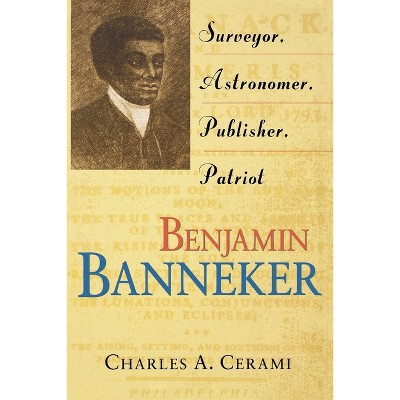
$19.49 - $22.99
MSRP $22.99 - $34.95
5 out of 5 stars with 1 ratings
